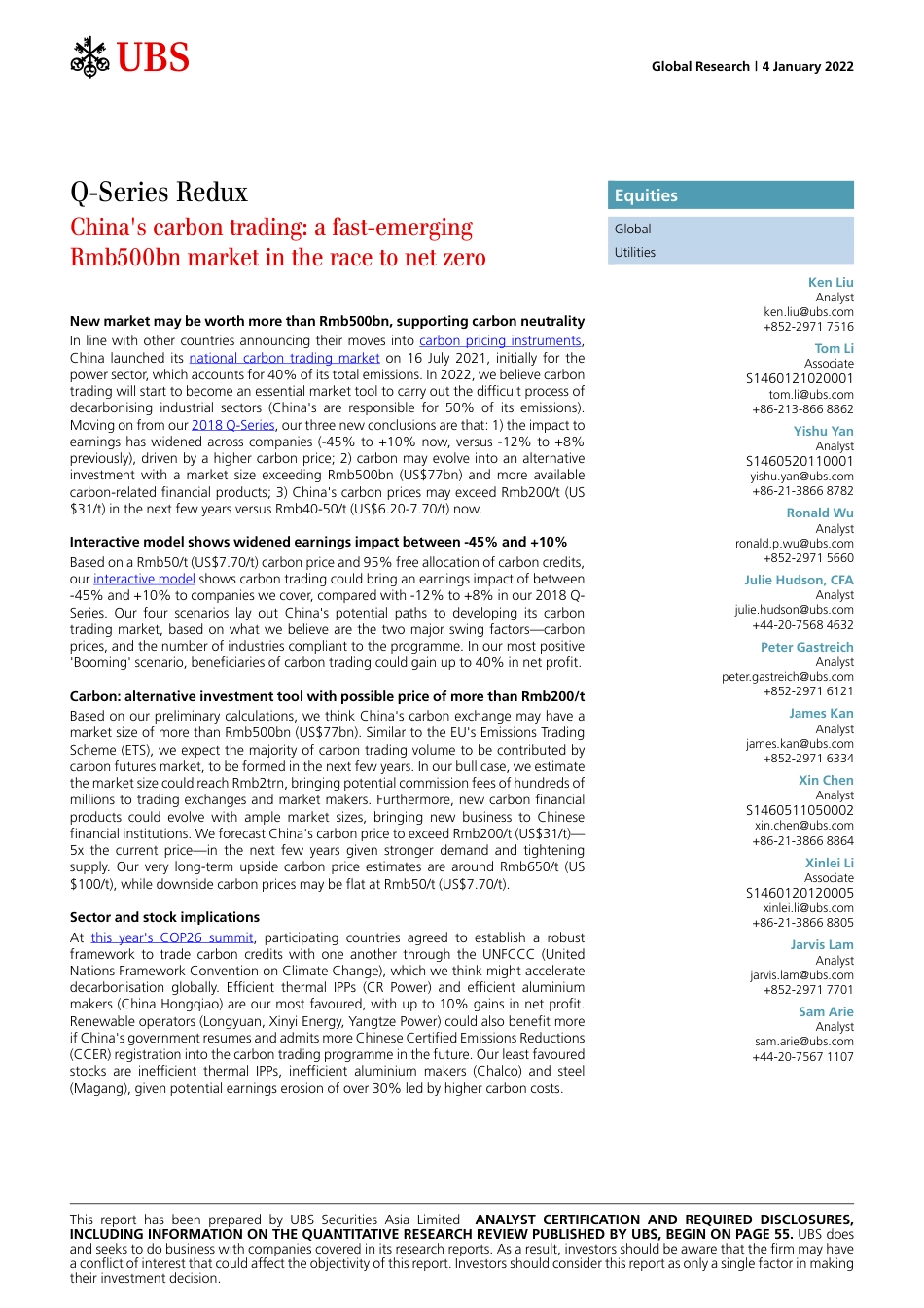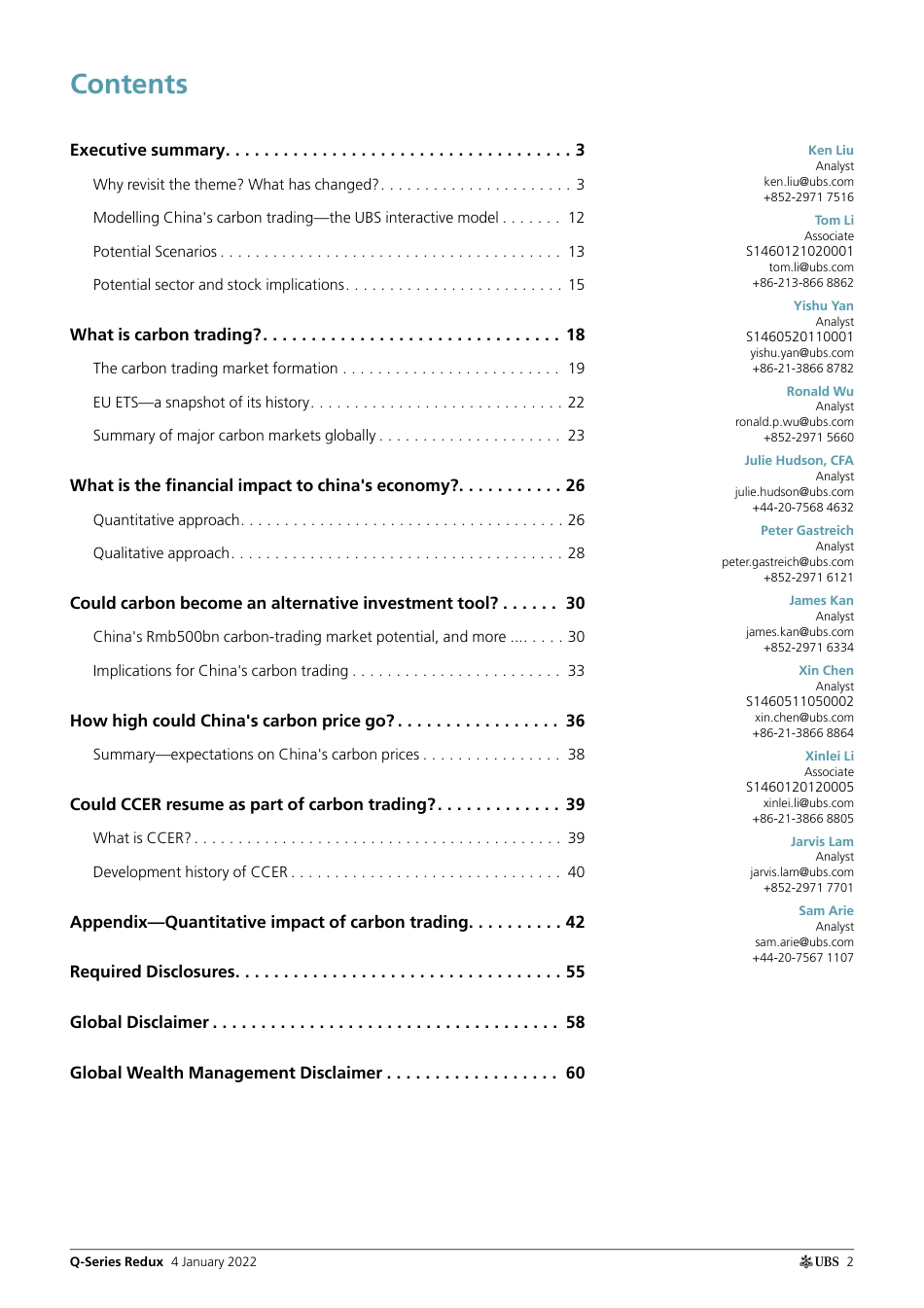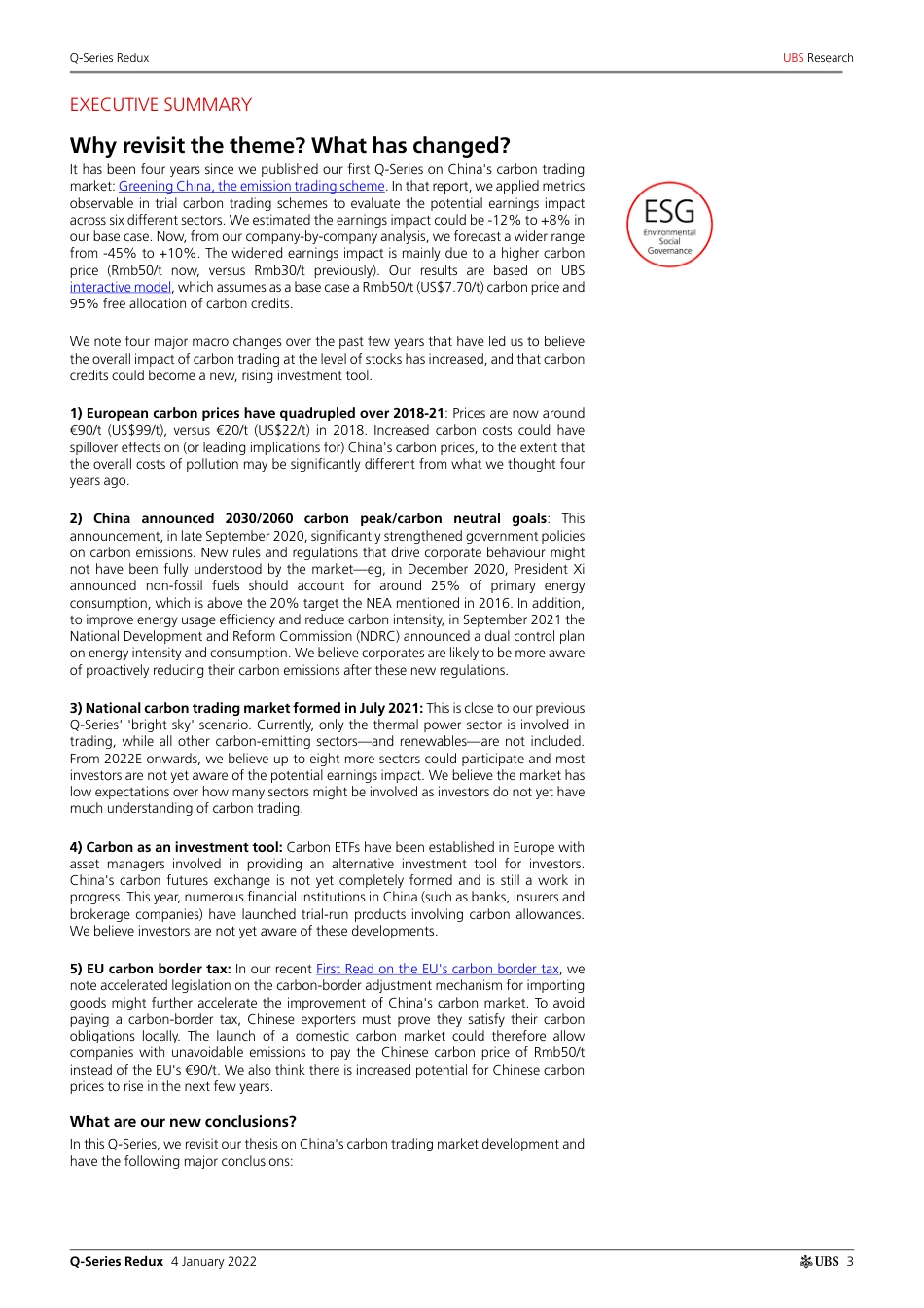abGlobal Research | 4 January 2022New market may be worth more than Rmb500bn, supporting carbon neutralityIn line with other countries announcing their moves into carbon pricing instruments, China launched its national carbon trading market on 16 July 2021, initially for the power sector, which accounts for 40% of its total emissions. In 2022, we believe carbon trading will start to become an essential market tool to carry out the difficult process of decarbonising industrial sectors (China's are responsible for 50% of its emissions). Moving on from our 2018 Q-Series, our three new conclusions are that: 1) the impact to earnings has widened across companies (-45% to +10% now, versus -12% to +8% previously), driven by a higher carbon price; 2) carbon may evolve into an alternative investment with a market size exceeding Rmb500bn (US$77bn) and more available carbon-related financial products; 3) China's carbon prices may exceed Rmb200/t (US$31/t) in the next few years versus Rmb40-50/t (US$6.20-7.70/t) now.Interactive model shows widened earnings impact between -45% and +10%Based on a Rmb50/t (US$7.70/t) carbon price and 95% free allocation of carbon credits, our interactive model shows carbon trading could bring an earnings impact of between -45% and +10% to companies we cover, compared with -12% to +8% in our 2018 Q-Series. Our four scenarios lay out China's potential paths to developing its carbon trading market, based on what we believe are the two major swing factors—carbon prices, and the number of industries compliant to the programme. In our most positive 'Booming' scenario, beneficiaries of carbon trading could gain up to 40% in net profit.Carbon: alternative investment tool with possible price...



